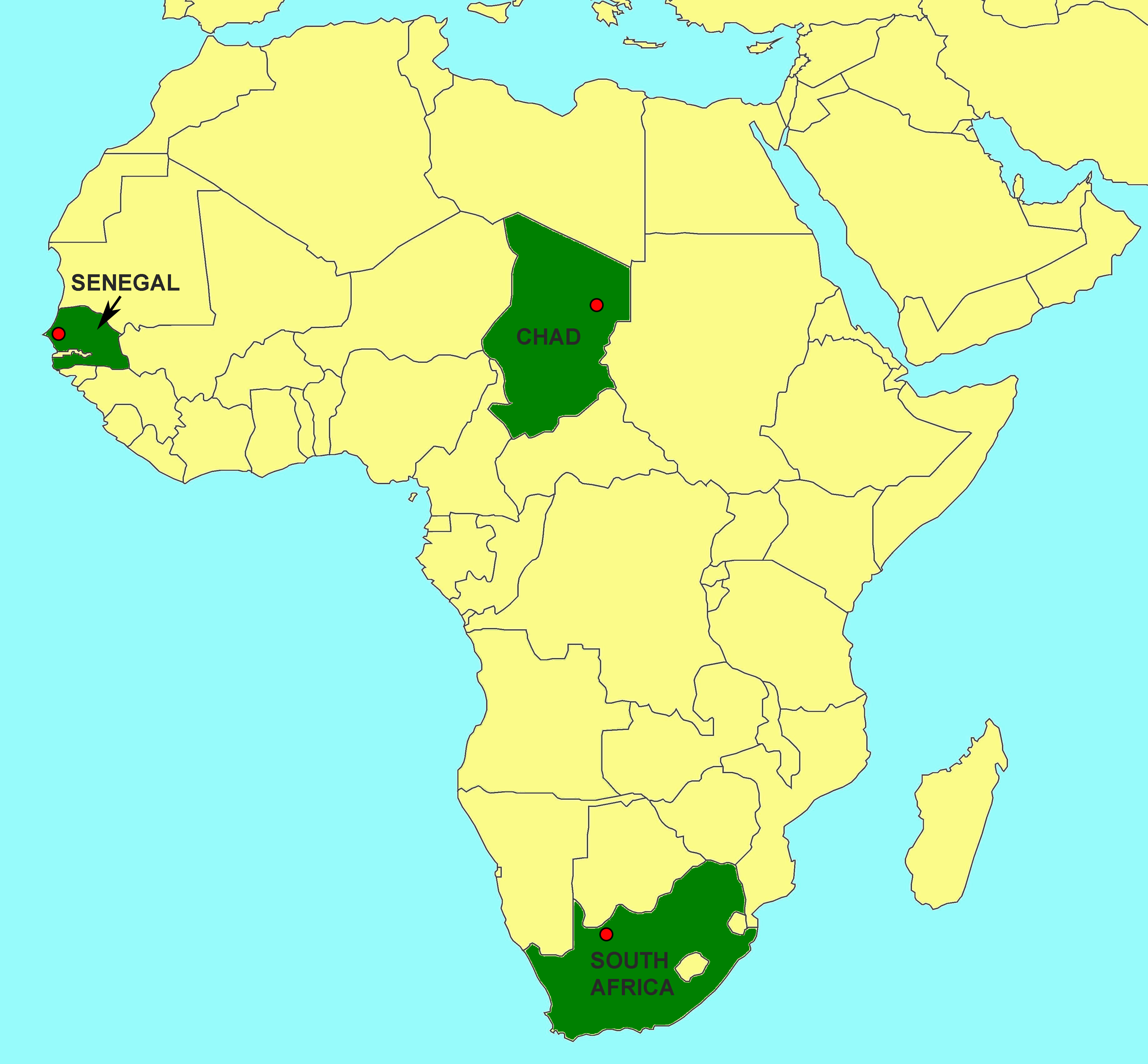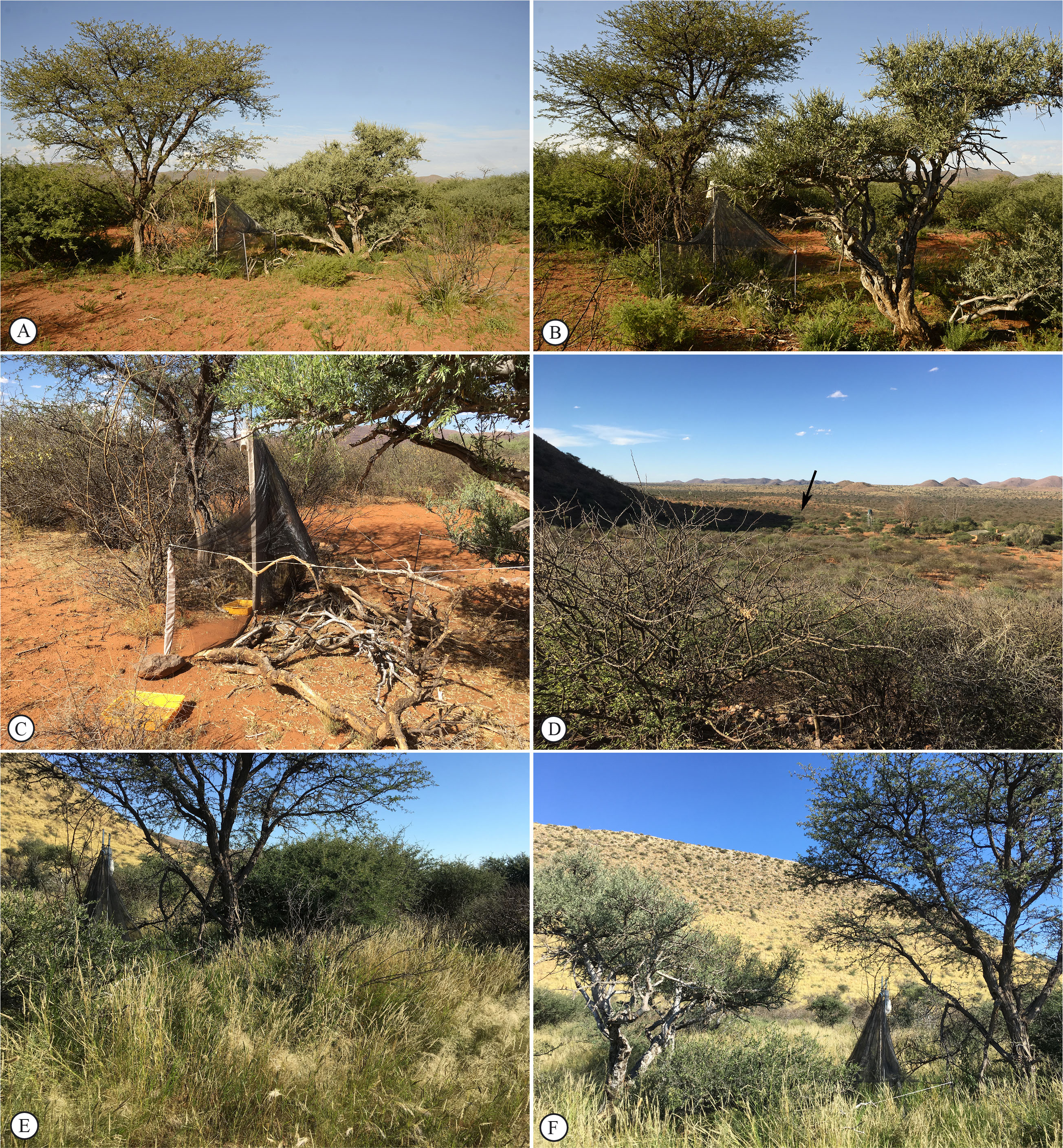Distribution
|

Chad, Senegal, South Africa. |
Biology
|
According to the
original label present on the holotype specimen the host of this species could
either be wood-boring Lyctus hipposideros Lesne, 1908, or Enneadesmus
forficula (Fairmaire, 1883) (Coleoptera, Bostrichidae). A label on the
paratype reads “ex A. raddiana” = Acacia raddiana Savi, which is
currently considered to be a subspecies of the Umbrella thorn acacia:
Vachellia tortilis subsp. raddiana (Savi) Kyal. & Boatwr. The
northern African specimens were collected in mid to late northern hemisphere
summer (May and August), and the two South African specimens were collected in
the latter half of the southern hemisphere summer (between 10 February and 9
May). Seasonal variation in arid habitats can be pronounced as shown in the
photos below depicting the sampling locality in Tswalu Game Reserve (South
Africa). Dead wood was gathered from the surrounding vicinity and stacked under
the Malaise trap to increase return on parasitoids of wood-boring hosts, and it
is likely that the S. phreneticus specimens emanated from this source
that probably contained wood-boring host beetle larvae (van Noort et al. 2021). |
Habitat
|

Spathioplites phreneticus South African sampling
site locality TSW15-DED3 in Tswalu Kalahari Game Reserve showing seasonal
changes in habitat: A, habitat May 2016, after poor summer rains; B, habitat May
2016, after poor summer rains; C, habitat Nov 2016 at end of dry winter season
showing dead wood stacked under Malaise trap to increase return on parasitoids
of wood-boring hosts (Malaise trap damaged by game animals prior to fixing); D,
habitat overview November 2016 (locality arrowed) at end of dry winter season;
E, habitat May 2017, after good summer rains; F, habitat May 2017, after good
summer rains. |
References
|
Belokobylskij, S.A. 1992. [On the
classification and phylogeny of the braconid wasps subfamilies
Doryctinae and Exothecinae (Hymenoptera, Braconidae) Part 1.]
Entomologicheskoye Obozreniye. 71(4):900-927. [Entomological
Review. 72(6):109-137.]
Fischer, M. 1962. Neue Braconiden-Parasiten von schädlichen
Insekten (Hymenoptera). Zeitschrift für Angewandte Entomologie.
49:297-312.
Shenefelt, R.D. & P.M. Marsh 1976.
Braconidae 9. Doryctinae. Hymenopterorum Catalogus, Pars 13:1263-1424.
van Achterberg, C. 1993. Illustrated key to
the subfamilies of the Braconidae (Hymenoptera: Ichneumonoidea).
Zoologische Verhandelingen 283: 1-189.
van Noort S, Belokobylskij SA, Touret-Alby A. 2021.
Rediscovery of the endemic Afrotropical genus Spathioplites
(Hymenoptera, Braconidae, Doryctinae) with major range extension
records for Spathioplites phreneticus. African
Invertebrates 62(2): 497–520.
https://doi.org/10.3897/AfrInvertebr.62.74103
|
Credits
|
Photographs of non-type and map illustration © Simon van Noort (Iziko Museums of
South Africa).
Photographs of holotype and paratype © Touret-Alby Agničle (MNHN).
http://coldb.mnhn.fr |
|